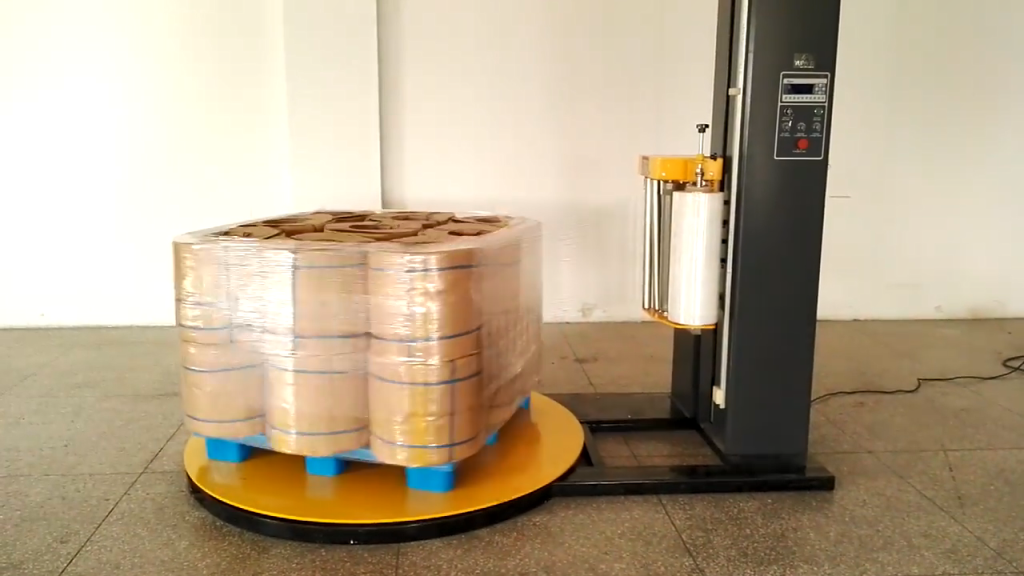How Pallet Wrapping Protects Your Products During Shipping

Pallet wrapping may seem like a mundane topic, but if you’ve ever received a delivery, you’ve benefited from this process. It’s the unsung hero of modern logistics, keeping goods safe and secure during transport. But what exactly is pallet wrapping? Why is it so important? Let’s dive in and explore everything you need to know about pallet wrapping.
What is Pallet Wrapping?
At its core, pallet wrapping involves covering a loaded pallet with a plastic film to secure the products in place during shipping. Whether it's a stack of boxes or oddly shaped items, pallet wrapping ensures that nothing shifts or gets damaged in transit. Imagine wrapping a gift pallet wrapping is like gift wrapping but for large shipments.
Why is Pallet Wrapping Important?
Ever wonder how goods survive long, bumpy journeys without falling apart? That’s the magic of pallet wrapping! It reduces product damage, protects goods from dust, dirt, and moisture, and ensures everything arrives intact. Without it, companies would face higher costs due to lost or damaged items.
Types of Pallet Wrapping Materials
Not all pallet wraps are created equal. There are different materials used depending on the type of products being shipped:
-
Stretch Film: The most common, it stretches to secure items tightly.
-
Shrink Film: Requires heat to shrink around the items, creating a tight seal.
-
Netting: Used for products that need ventilation, like fresh produce.
Hand vs Machine Pallet Wrapping
There are two main methods of pallet wrapping: manual (hand) and automatic (machine):
-
Hand Wrapping: Suitable for small businesses or occasional shipments, it’s labor-intensive but cost-effective.
-
Machine Wrapping: Ideal for larger operations, machines can wrap pallets faster and more consistently than humans.
Stretch Film: The Heart of Pallet Wrapping
Stretch film is the go-to material for pallet wrapping. It’s flexible, strong, and adheres to itself. Think of it like a giant rubber band, tightly hugging your products to prevent them from moving around. Stretch film is available in various thicknesses, with more durable options for heavier loads.
Pallet Wrapping Techniques
There’s more to pallet wrapping than just slapping some film on a pallet. Techniques matter:
-
Spiral Wrapping: The film is applied in a spiral pattern from the bottom to the top of the pallet.
-
Cross Wrapping: Combines horizontal and vertical wraps for extra security.
-
Bundling: For securing smaller groups of items on a pallet.
Each technique has its own advantages, depending on the type of products being shipped.
How to Choose the Right Pallet Wrapping Method?
Choosing the right pallet wrapping method depends on several factors:
-
Product Size and Shape: Oddly shaped items may require more secure wrapping.
-
Load Weight: Heavier loads need thicker and stronger wrapping.
-
Shipping Distance: Long-distance shipments may need more layers for extra security.
Common Mistakes in Pallet Wrapping
Even the best material won’t save you if the wrapping is done poorly. Common mistakes include:
-
Insufficient Film Layers: Skimping on layers can result in product shifting.
-
Incorrect Tension: If the film is too loose, it won’t hold; too tight, and it can damage the products.
-
Uneven Wrapping: Focusing only on the middle of the pallet while neglecting the top and bottom can lead to instability.
Environmental Impact of Pallet Wrapping
With the increasing focus on sustainability, pallet wrapping has come under scrutiny. Most films are made of plastic, which contributes to waste. However, innovations in biodegradable and recyclable films are making pallet wrapping more eco-friendly. Businesses can also reduce their environmental footprint by using thinner films or reusing materials when possible.
Innovations in Pallet Wrapping
The world of pallet wrapping isn’t static. New developments include:
-
Smart Films: These films change color when the right tension is applied, helping to ensure optimal wrapping.
-
Automated Wrapping Machines: Faster and more efficient, reducing the time and labor needed.
-
Sustainable Materials: Biodegradable and recyclable wraps are growing in popularity.
The Future of Pallet Wrapping
As shipping demands grow, so does the need for better pallet wrapping solutions. Expect to see more eco-friendly materials or trusted platform like maxpack, smarter machines, and better techniques to reduce damage, lower costs, and protect the environment.
How Pallet Wrapping Saves Costs?
Pallet wrapping might seem like an added expense, but it actually saves money in the long run:
-
Reduced Product Damage: Properly wrapped pallets mean fewer damaged goods, which leads to fewer returns and refunds.
-
Efficient Shipping: Well-wrapped pallets are easier to stack and transport, reducing shipping costs.
-
Lower Labor Costs: Automated wrapping machines can significantly cut down on manual labor expenses.
FAQs on Pallet Wrapping
Q1: What is the best material for pallet wrapping?
Stretch film is the most commonly used material due to its flexibility and strength. However, for specific needs, shrink wrap or netting may be better.
Q2: Can pallet wrapping be reused?
While most pallet wraps are designed for single-use, some materials can be reused if they aren’t too damaged after initial use.
Q3: How many layers of wrap should I use?
This depends on the weight and size of your load. Generally, 2-3 layers for lighter loads and up to 5 layers for heavier shipments.
Q4: What is the difference between hand and machine pallet wrapping?
Hand wrapping is manual, suitable for small-scale operations. Machine wrapping is automated and ideal for high-volume shipments.
Q5: Is pallet wrapping eco-friendly?
Standard pallet wrap is made from plastic, which isn’t very eco-friendly. However, there are now sustainable options like biodegradable and recyclable films available.
- Art
- Causes
- Crafts
- Dance
- Drinks
- Film
- Fitness
- Food
- Juegos
- Gardening
- Health
- Home
- Literature
- Music
- Networking
- Other
- Party
- Religion
- Shopping
- Sports
- Theater
- Wellness


